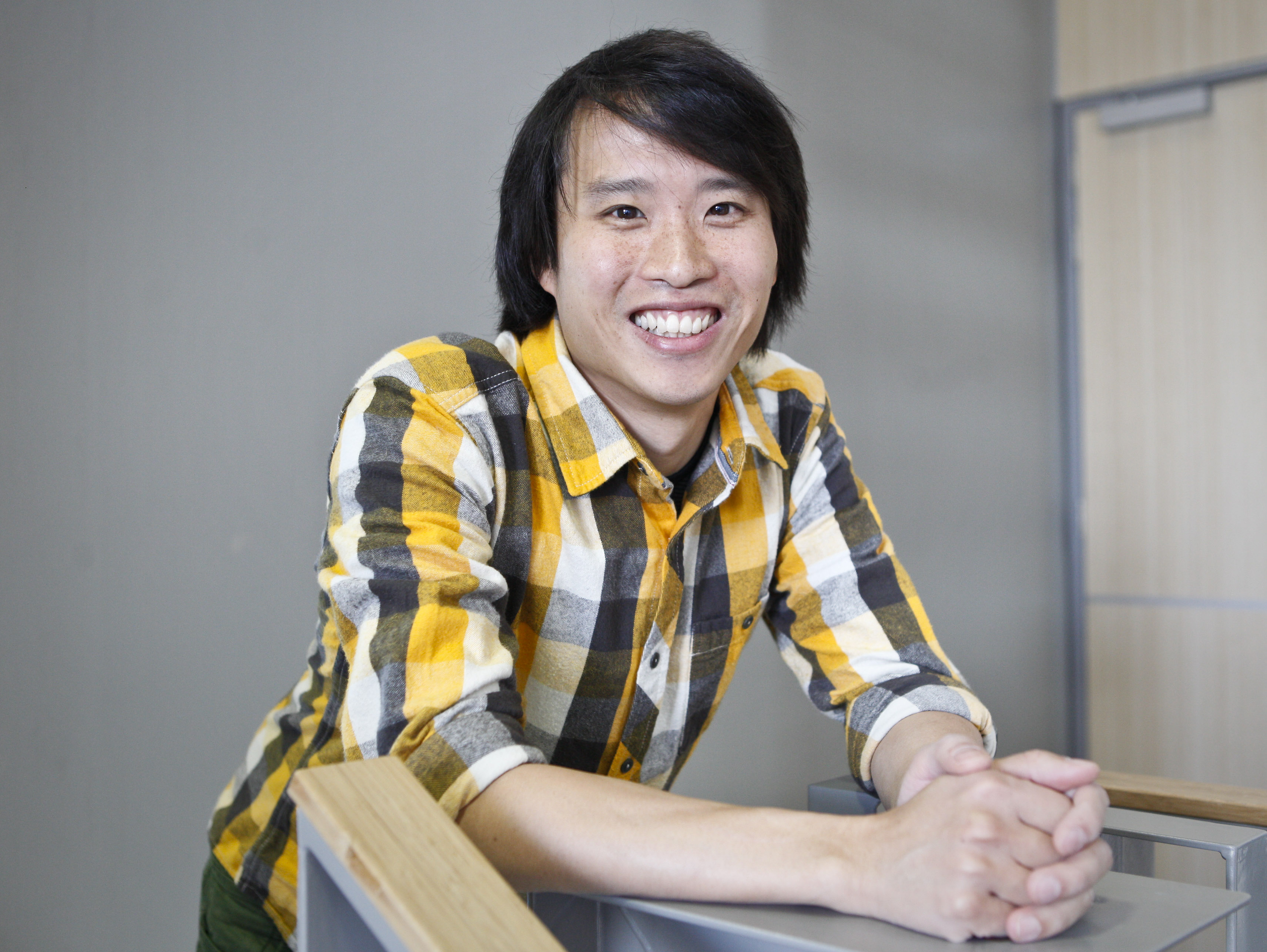Inside ERIBA: Michael Chang
How does ERIBA’s research evolve and who are the people behind it? The series “Inside ERIBA” gives you the opportunity to get to know the institute and the people that contribute to it. The start of the series consists of an interview with ERIBA group leader Michael Chang about his drive and interests.
Solving the puzzles of life
‘I’m a geneticist, my interest lies in genes’, says Eriba group leader Michael Chang. In particular, he wants to know how cells can preserve their genetic material from generation to generation. Understanding this mechanism may explain to some extent why we age.
He was not particularly interested in ageing research when he saw a position as group leader in Eriba advertised. ‘But I knew Peter Lansdorp, who was going to be Scientific Director, as we were working in a similar field. He encouraged me to apply’, explains Chang in his office at the Eriba building, where he has resided since the day the building opened its doors in 2012. His work for Eriba started even earlier: ‘Before the building was finished, I already worked at the Zernike Campus.’
His drive, he explains, is to understand how nature works. ‘That will certainly benefit human health in the long run, but we need to get a broad base of fundamental knowledge, because we don’t know which bits of knowledge are going to be useful.’
Chang is interested in the integrity of DNA. ‘Cells protect their DNA from one generation to the next. An important tool in this process is the enzyme telomerase.’ In our cells, genetic information is carried on chromosomes, which are essentially long DNA molecules. The ends of these molecules are ‘capped’ with a structure called a telomere. These telomeres protect the ends of chromosomes, just like the plastic caps on shoelaces protect them from fraying.
Some forty years ago, scientists discovered that during each cell division, when all the DNA is copied and divided over the two new cells, the telomeres are shortened. When they get too short, the cell will stop dividing and die.
‘In some cells, the enzyme telomerase is active and elongates the telomeres, so they won’t get shorter. But in most of our cells, telomerase is not active.’ This is probably a measure to protect us from cancer: when telomerase keeps the telomeres long, the cells will keep dividing indefinitely, which is just what cancer cells do. But the flipside is that cells with inactive telomerase have a limited lifespan. Thus, telomeres have been seen as a cause for ageing because they limit the lifespan of the cell and the number of divisions it can make.
‘I’ve been investigating telomerase in yeast cells for some ten years now’, says Chang. ‘In these cells, telomerase remains active so their telomeres don’t get shorter. But if you knock out the telomerase gene in yeast cells, they will stop growing when the telomeres are too short.’ This is consistent with the idea that telomerase prevents ageing. But there are other mechanisms involved in the ageing of cells. For example, yeast cells which are starved will stop growing. If the starvation period lasts too long, they can’t be revived. ‘Thus, even when they are not dividing, these cells age. This could be a model for the ageing of non-dividing cells in our body, like brain cells.’
A second indication that telomerase is not the “only player in the ageing game”, lies in the limited number times yeast cells can divide: ‘In yeast, a mother cell can only produce about 20 to 25 daughter cells, and then dies.’ This also happens in cells with active telomerase, so it is an ageing process that has nothing to do with the shortening of telomeres. The process is called ‘replicative ageing’ and it is a good example of the sort of puzzle that Chang likes. Currently, he is in collaboration with Eriba group leader Liesbeth Veenhoff to get a deeper understanding of the mechanisms behind it.
And the subject gets even more complicated, some yeast cells in which telomerase is knocked out still survive. Apparently, these cells have other mechanisms to elongate their telomeres. What constitutes these mechanisms is a puzzle Chang particularly wants to solve. A process called DNA recombination is involved. In this process, chromosomes swap large chunks of DNA. Part of Chang’s research is focused on the role of DNA recombination in telomere lengthening, and the proteins that guide it.
The exact role of telomeres in ageing is still a mystery. ‘It would be great if my work could help find a better treatment for cancer, or a better understanding of ageing.’ But it’s a long road from fundamental knowledge to application. Chang: ‘The discovery of telomeres and the role of telomerase were made in the 1970ies, in pond scum cells and yeast cells. But the importance for humans only became clear much later. And it wasn’t until 2009 before the discoverers were awarded the Nobel Prize for their work!’
Would Chang venture to predict what new knowledge his research will have produced in five years time? He smiles, but declines to answer. ‘We don’t know what the result will be when we solve those puzzles I mentioned. But that is how science is done: it is a matter of asking interesting questions.’
Back to previous page





